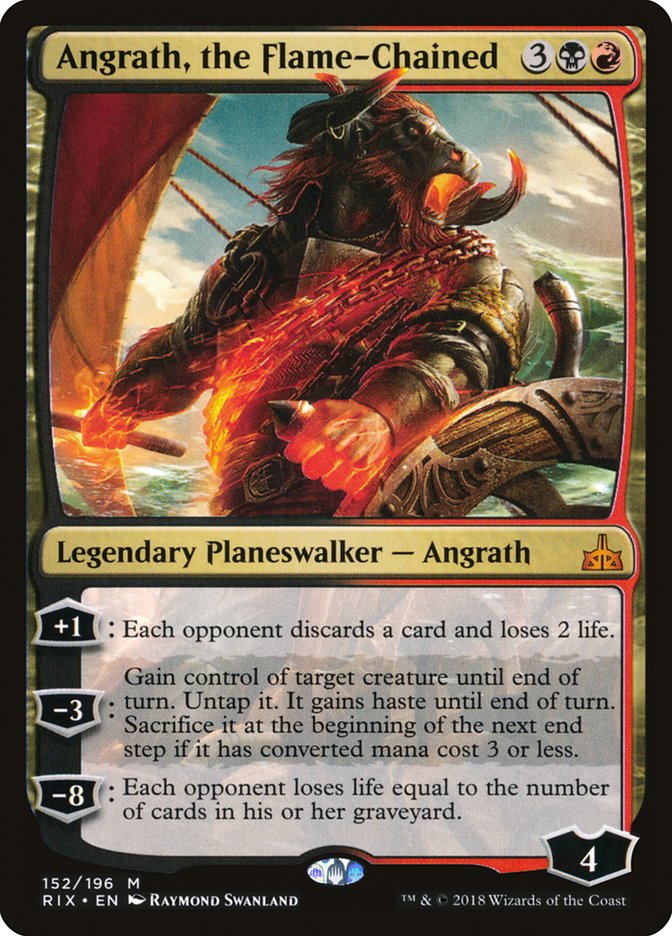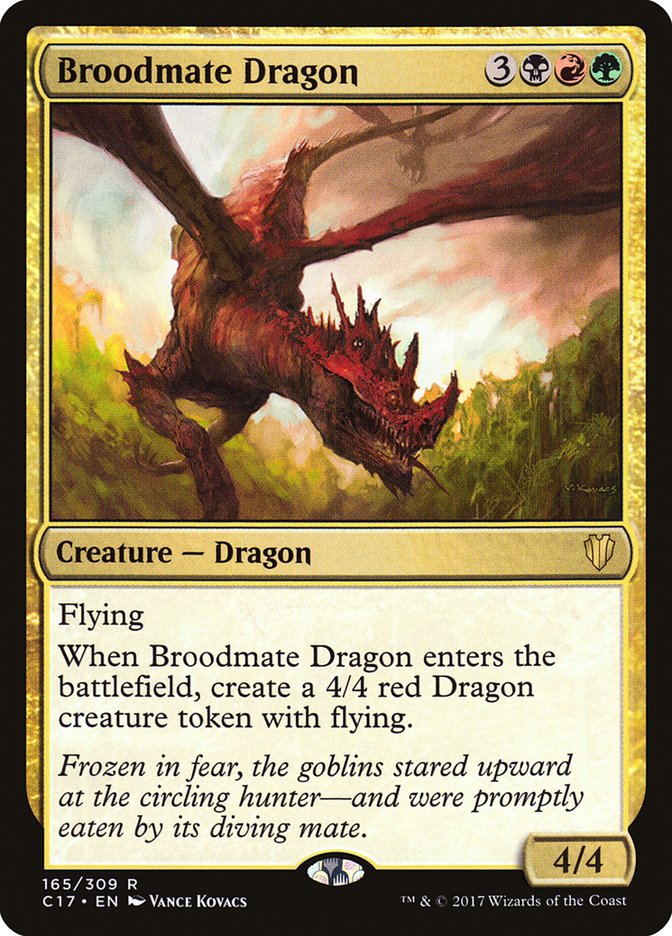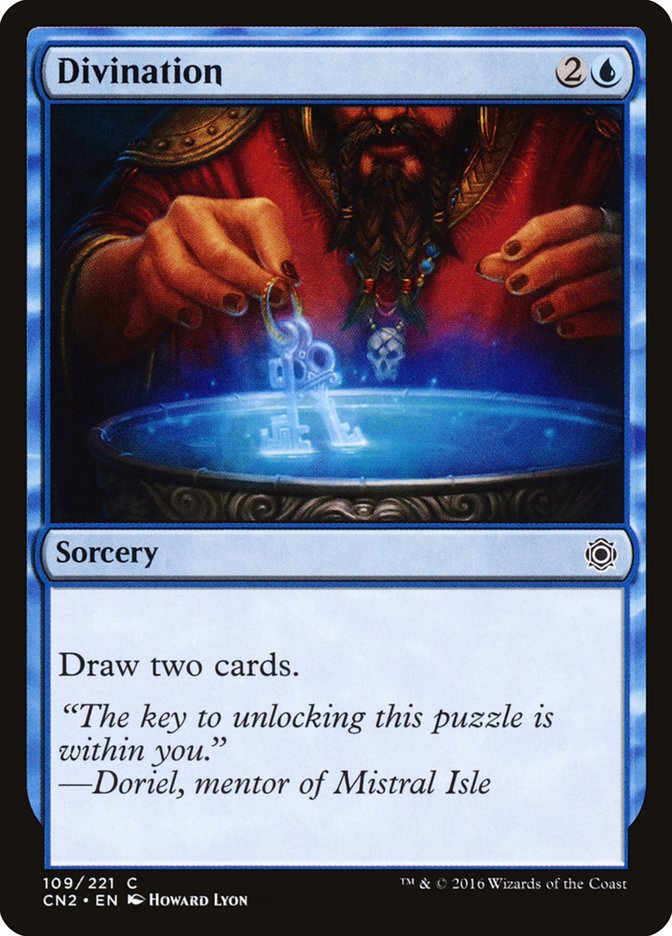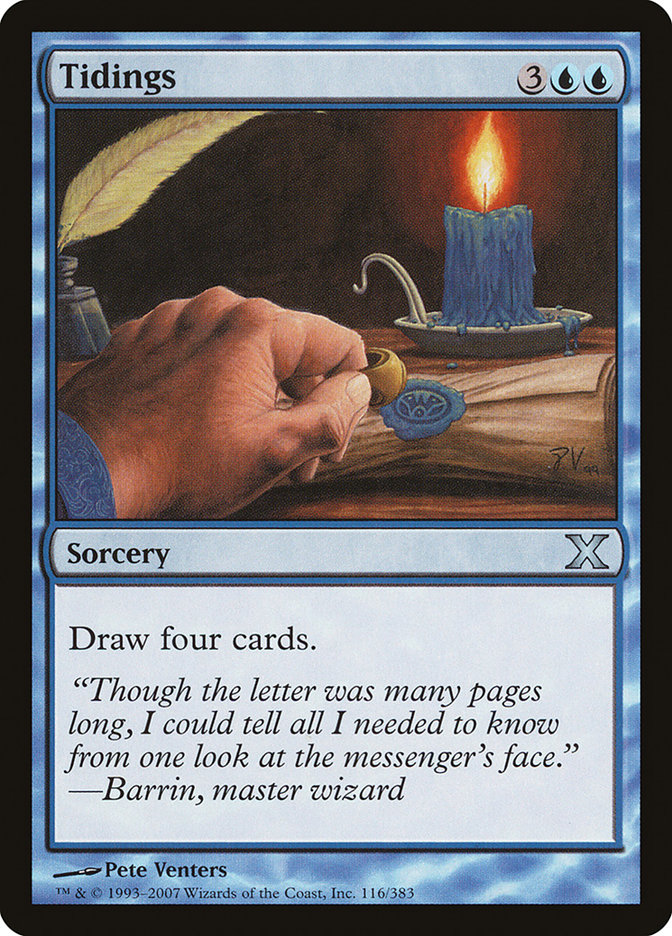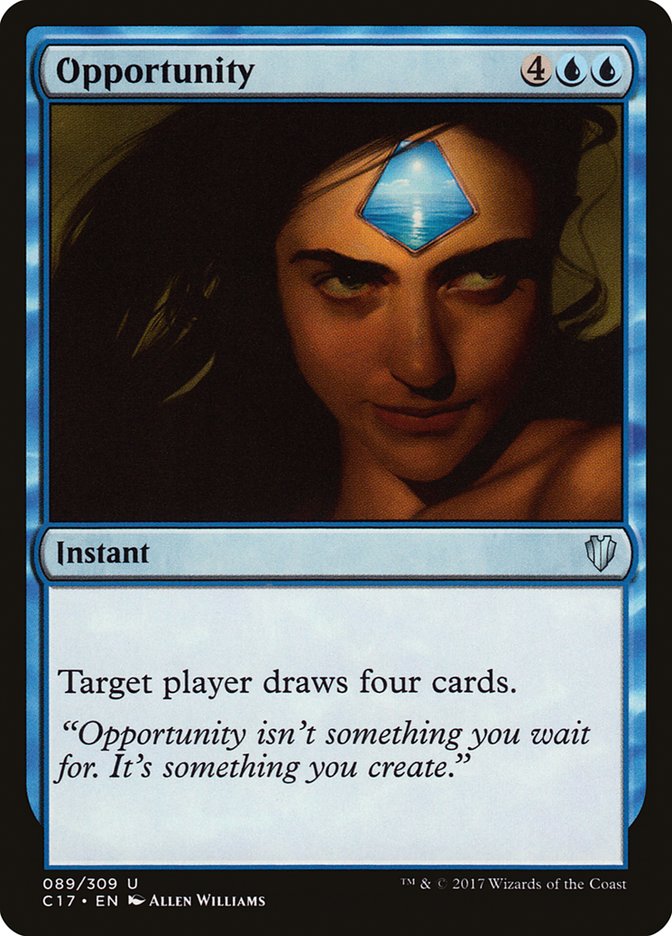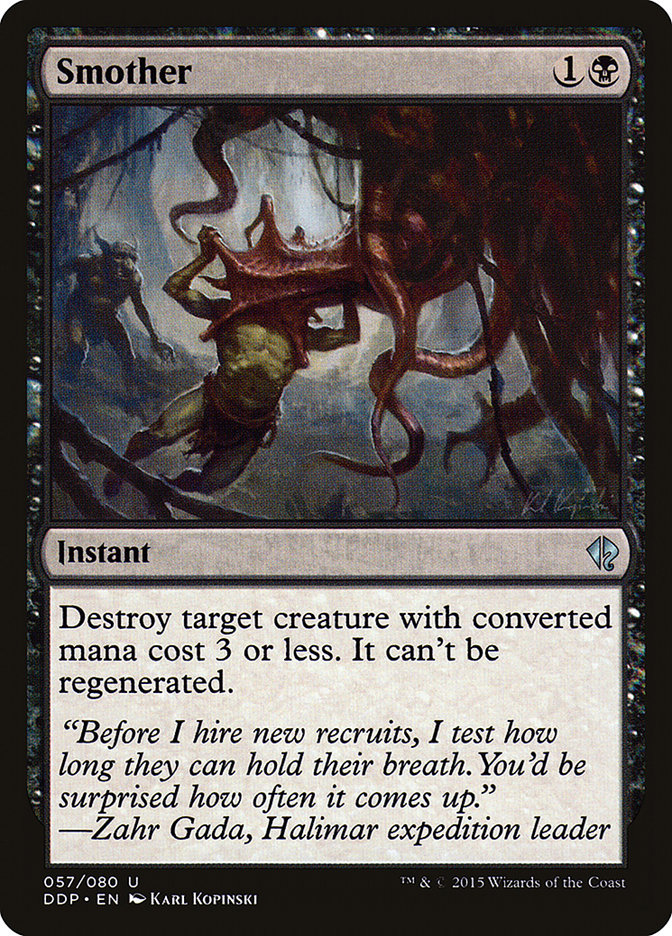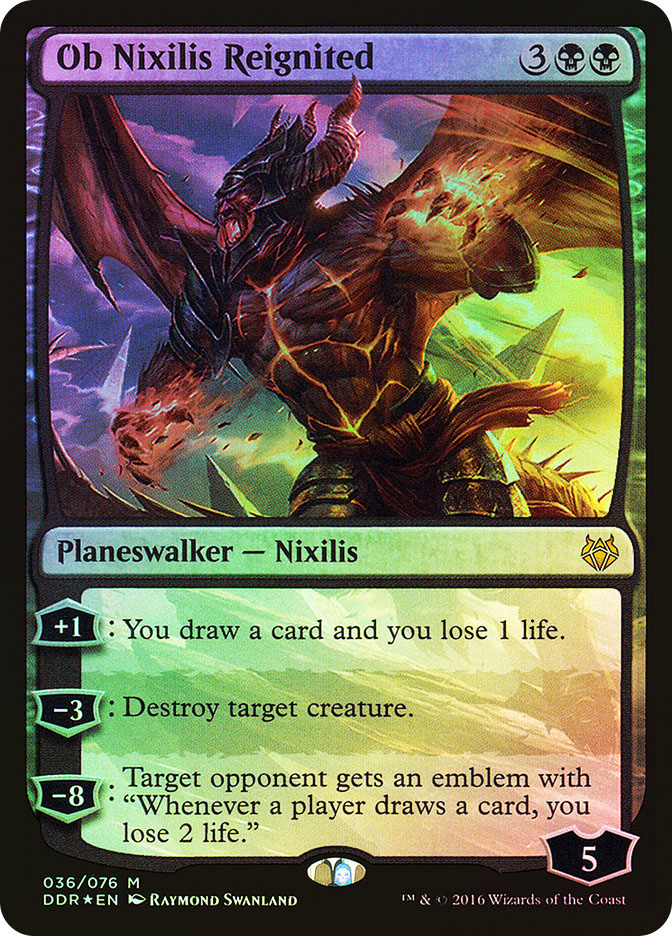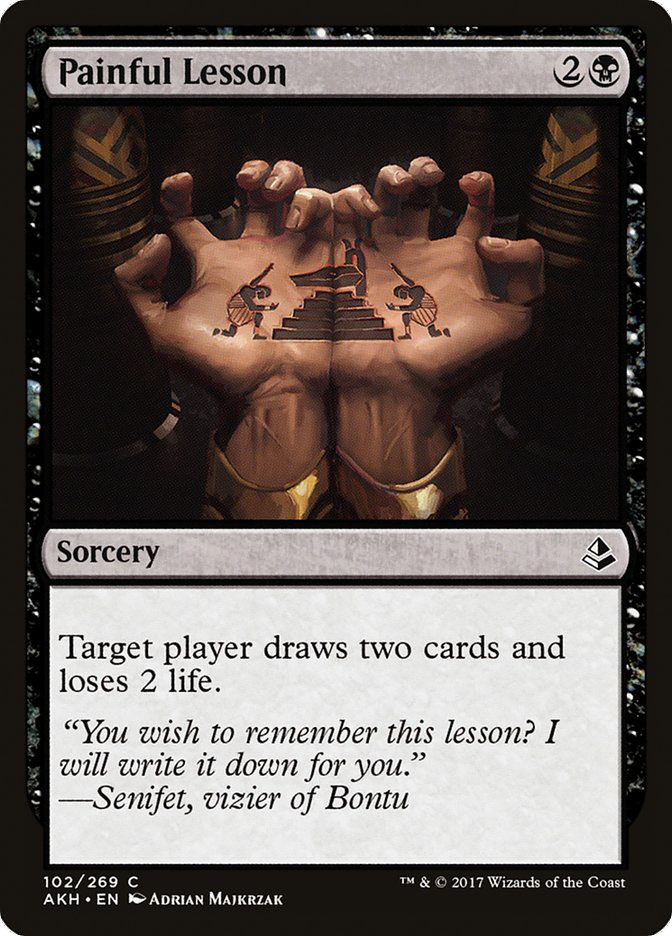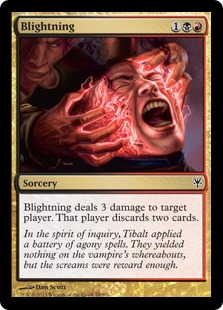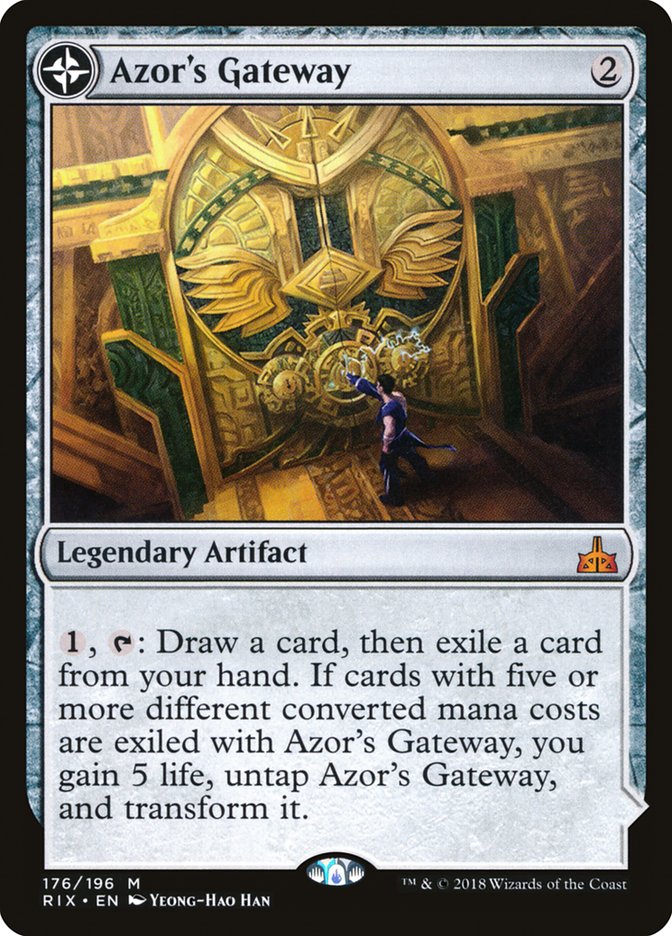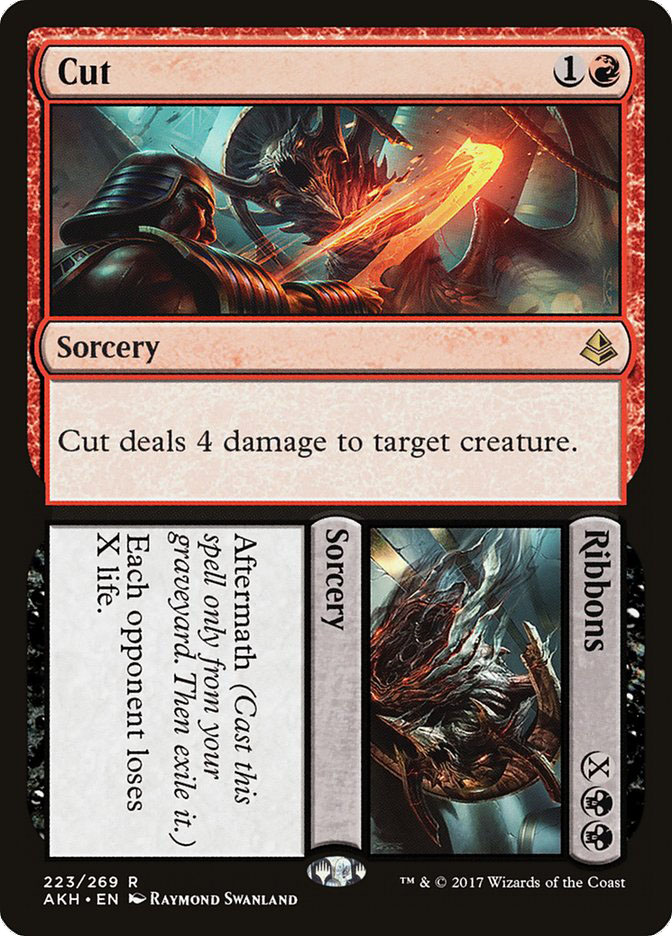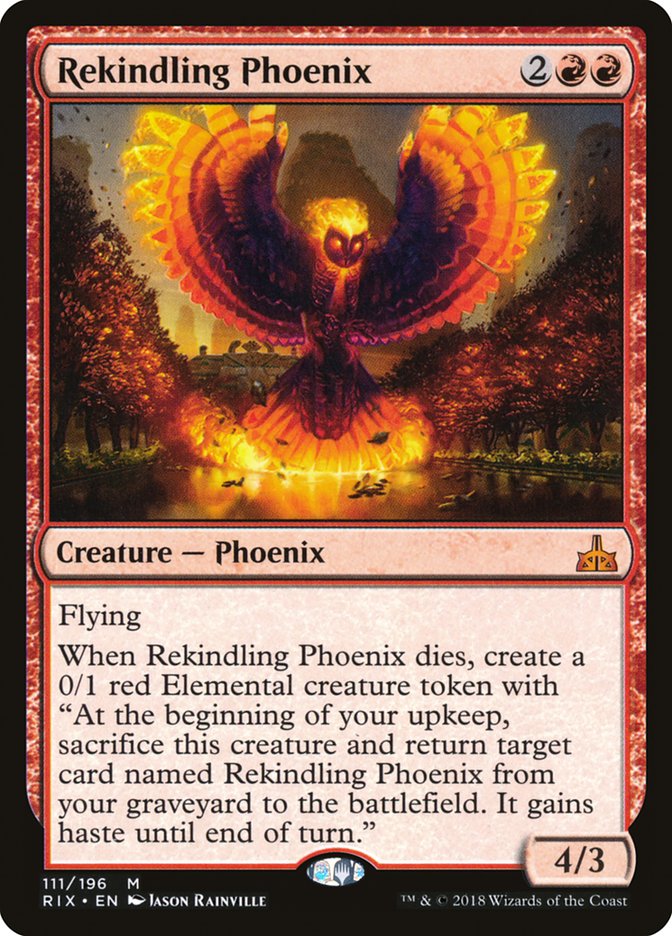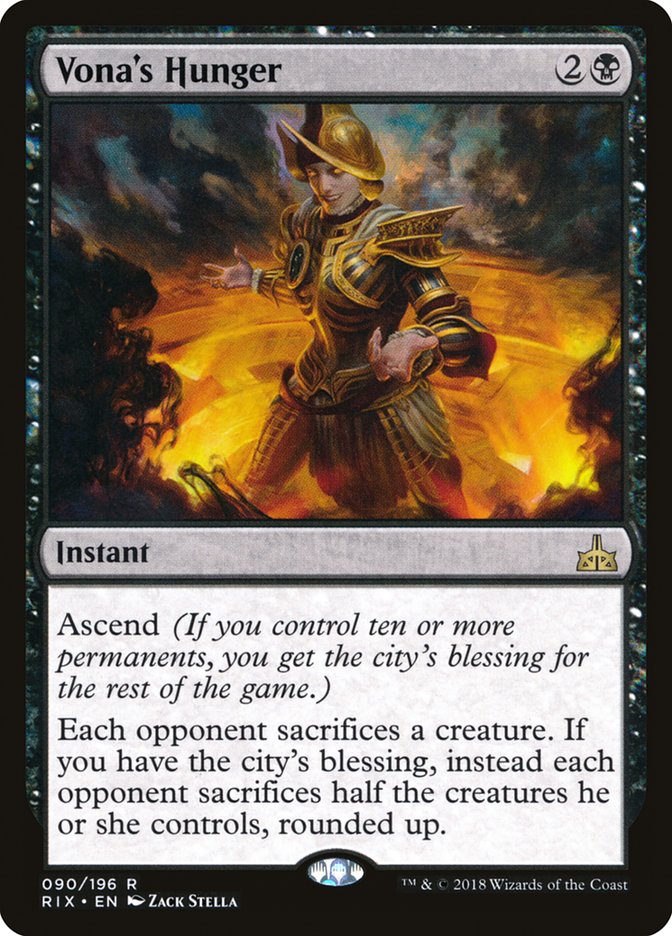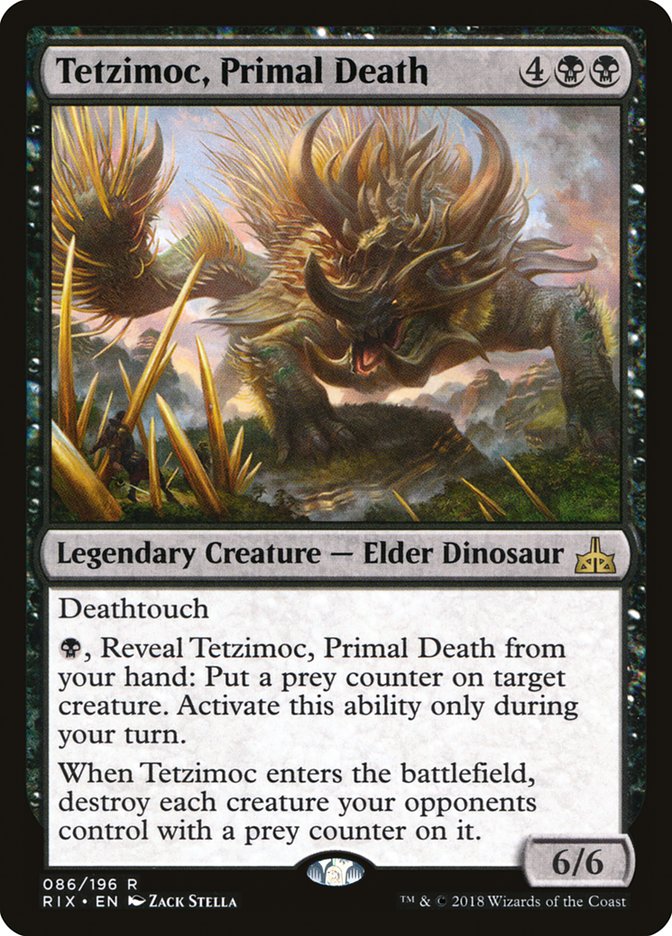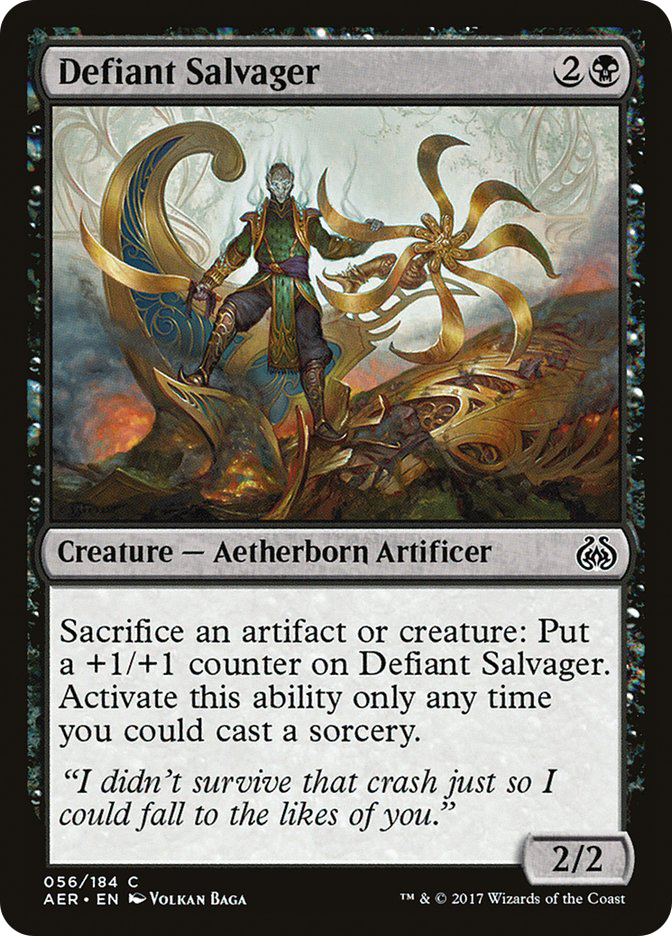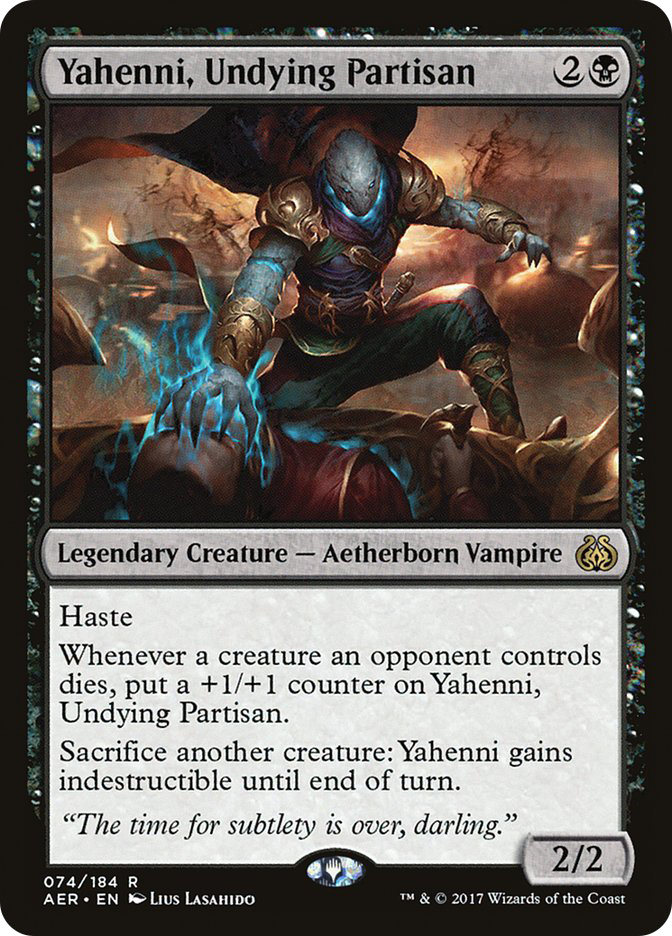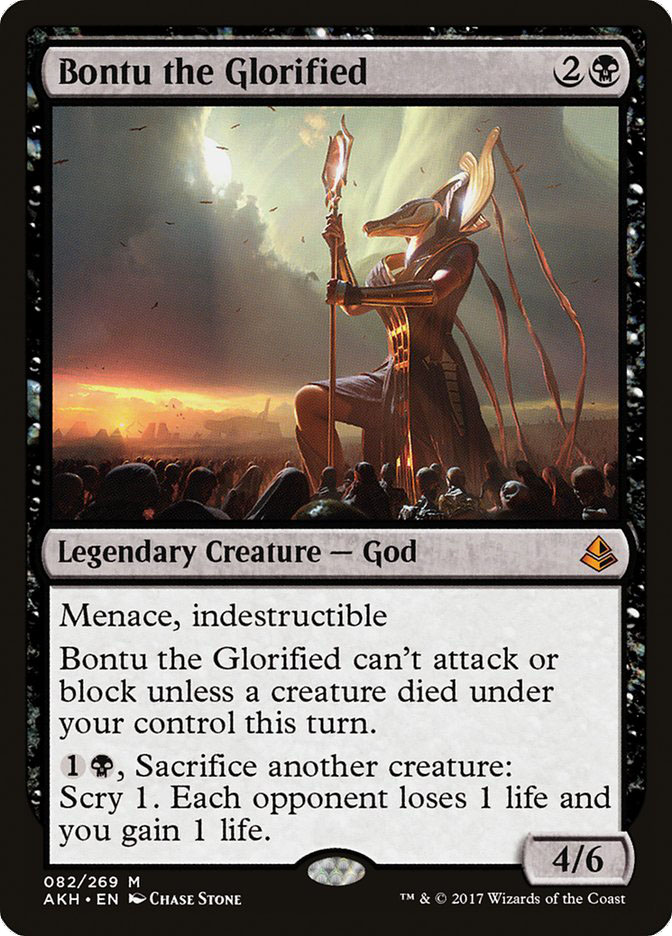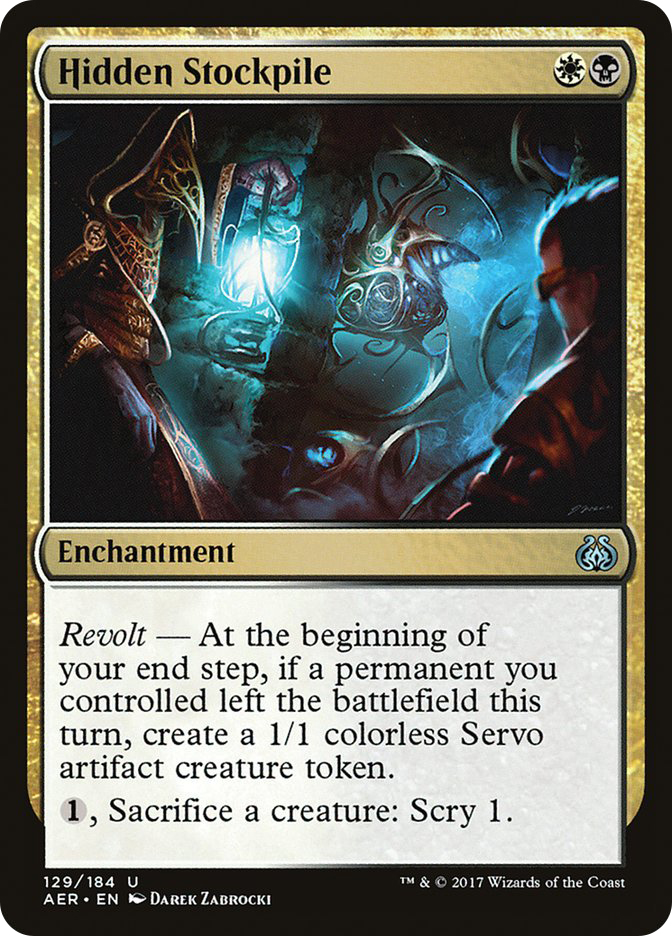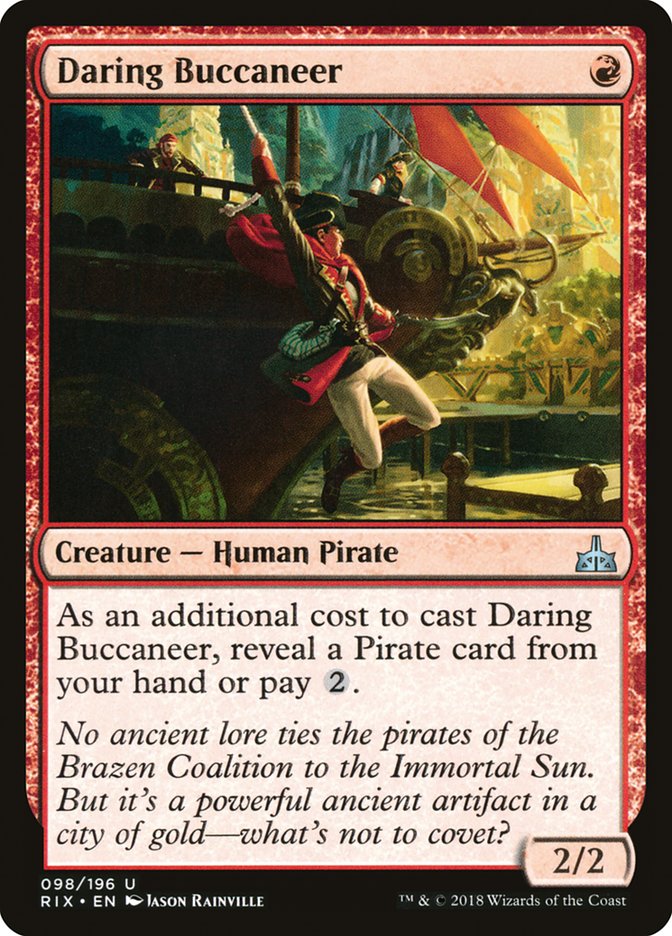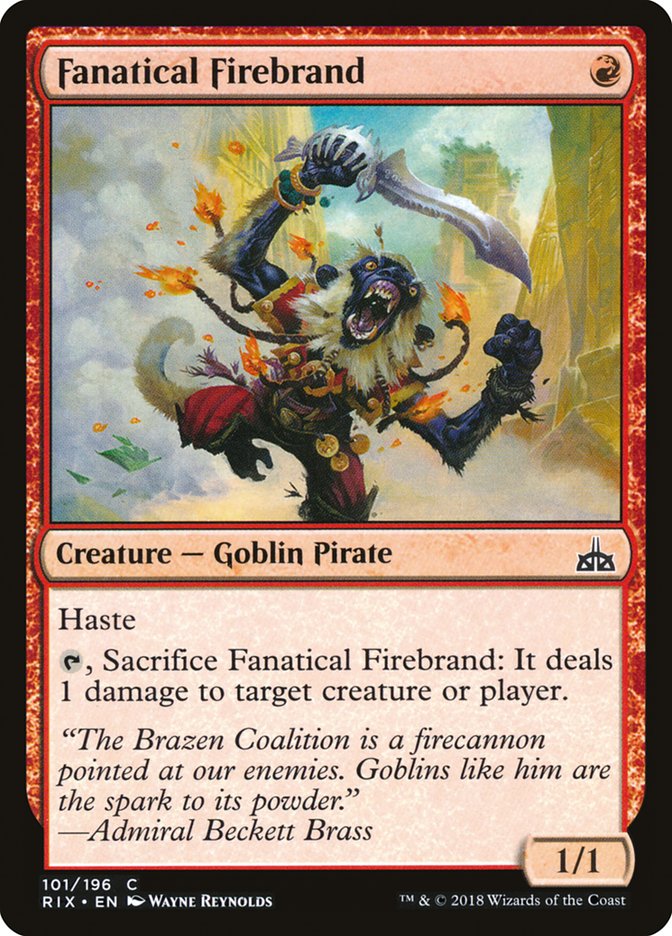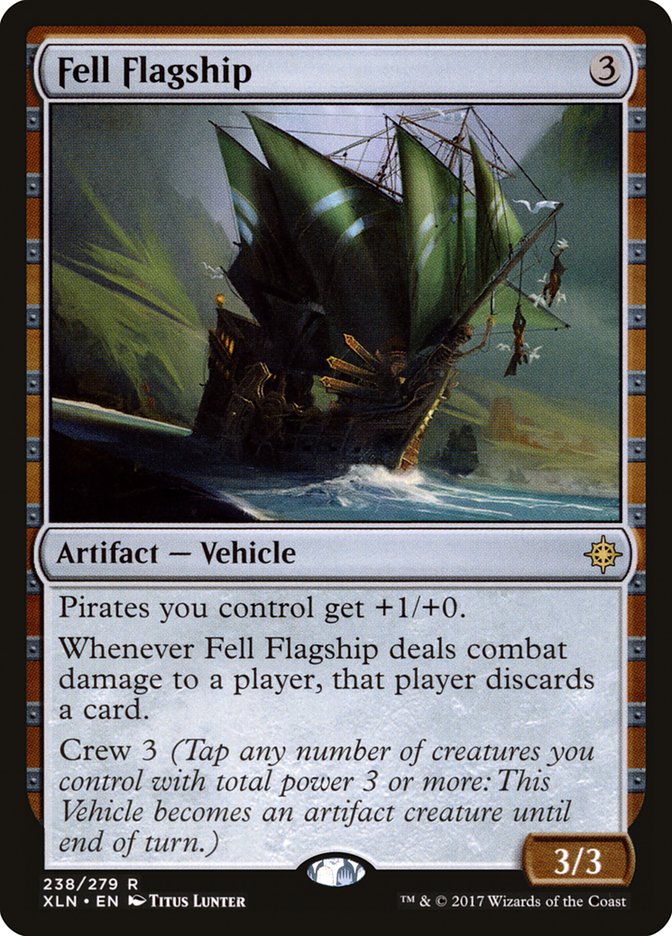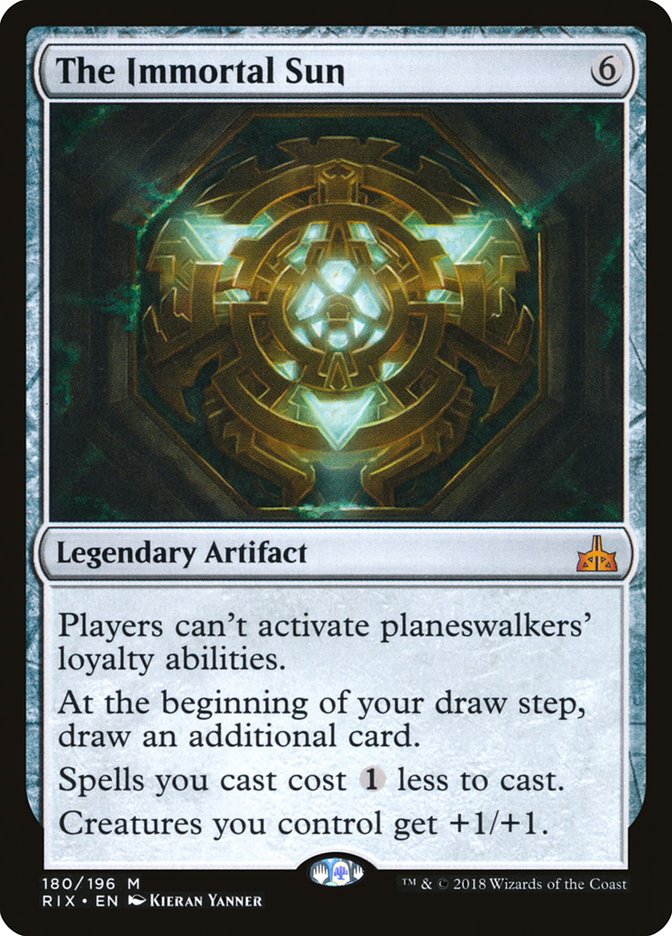What seems like the shortest preview season ever kicked off this week,
leaving us with a deluge of new cards. The upcoming Standard format is also
in an uncanny spot, with no Standard Pro Tour alongside it (with the first
Modern Pro Tour since Eldrazi Winter).
There are way more noteworthy cards to discuss than can be covered in a
single day, but we’ve got to start somewhere.
So, it might as well be a new planeswalker.
Angrath, the Flame-Chained has enormous competition at five, being dropped
into a format with Glorybringer and The Scarab God. What are we getting for
our five mana?
Generally speaking, I find the best place to start for evaluating
planeswalkers is whatever ability has the strongest impact on the game that
you can play immediately. This gives us a baseline of the most impactful
way to use the planeswalker as a “sorcery or instant,” which gives us the
effect as well as playing a planeswalker with however much loyalty. From
there, we can evaluate the other “modes” it comes with. Since most
planeswalkers have a plus ability first and an ultimate that takes time to
get to third, this usually means starting with the middle ability.
-3: Gain control of target creature until end of turn. Untap it. It
gains haste until end of turn. Sacrifice it at the beginning of the
next end step if it has converted mana cost 3 or less.
This ability is basically Threaten for two mana more, with two very
important differences.
First, if the creature costs 3 or less (which it very often will), you
actually get to sacrifice it instead of giving it back. Notably, Slave of
Bolas was never quite good enough, which was basically an Act of Treason
that sacrificed the creature at the end of the turn, regardless of cost.
It’s a nice option, but we’re going to need more.
Secondly, you also get an Angrath, the Flame-Chained on the battlefield
with one loyalty. This may not seem like a lot, but in many ways, it’s
basically a cantrip. After all, it’s like we drew a card and that card was
a zero-cost planeswalker. It only has one loyalty, but for zero mana, we’re
doing alright.
Evaluating mana-efficiency is a very complex subject; however, as a quick
and dirty rule of thumb, five-mana spells that give you two effects that
would normally cost three-mana (and a card) are better than those
three-mana spells. In fact, a six-mana spell is almost as good as two
three-mana spells stapled together. For instance, consider Broodmate
Dragon:
Broodmate Dragon is basically a spell that gives you two 4/4 Flying Dragons
(one mono-red, one three-color). It’s much better than 4/4 fliers for four
(which it lets you buy two copies of for two extra mana and no additional
cards); however, a 4/4 flier for three would be excellent (and possibly
slightly better).
Even though it’s +1 card and the same mana efficiency, the opportunity cost
of how much time it sits in your hand when a three-drop could be played,
typically at least makes up for the +1 card in most formats (though it is
close).
Here’s a rather straightforward example:
Tidings is basically two Divinations stapled together for +2 mana (and only
needing one card, instead of two). Our above heuristic correctly predicts
that Tidings is a stronger card than Divination.
Opportunity is also two Divinations stapled together; but it has the upside
of being an instant. While Opportunity is also slightly better than
Divination, I think we’d consider an instant speed Divination at least as
good as Opportunity.
What does this have to do with Angrath?
Well, dropping Angrath and using the -3 ability is basically an Act of
Treason (three-mana spell) stapled to a three-cost planeswalker with an
excellent +1 ability, but only one loyalty.
Now, Angrath is generally more efficient than Act of Treason or the
aforementioned three-cost Planeswalker, but we’ve also got to consider
whether we’re really getting the full three-mana worth of value out of
either half. After all, Act of Treason may be “worth” three-mana, but it’s
not a card that’s equally useful to everyone or in every spot.
Additionally, three-cost planeswalkers are not always the natural pairing
with Act of Treason.
What really pushes this one over the finish line for me, is that sacrifice
clause. It’s kind of a novel effect, but my first instinct is to consider
an Act of Treason that sacrifices the creature if it costs 3 or less to be
worth a full 2RB.
After all, we’re actually getting an Act of Treason and the better part of
a Smother. It has to be on the same creature and only works when you target
a small-ish creature with the Act of Treason; we can’t really count it as a
full Smother.
Conveniently, that’s also halfway between Slave of Bolas and Act of
Treason, but regardless, even if we’re not getting full value out of the
Act of Treason on turn 5, we don’t need to. The sacrifice clause adds a ton
of power, letting us rely a little more on brute force.
Additionally, while three-cost planeswalkers don’t immediately spring to
mind when considering Act of Treason, they do synergize excellent with
three-cost kill spells. Additionally, Angrath’s +1 ability is actually
deceptively strong, functioning simultaneously as a two-power unblockable
threat and as a source of card advantage turn after turn.
+1: Each opponent discards a card and loses 2 life.
This ability looks excellent, to me. Compare this top ability to the top
ability of another five-cost black planeswalker:
Instead of making each opponent discard a card each turn, Ob Nixilis can
let you draw an extra card each turn. As a starting point, that’s generally
a stronger ability. However, whereas Ob Nixilis makes you lose one life
each time, Angrath makes your opponent lose two life each time. A
three-point swing is absolutely huge.
To put these two abilities in perspective, consider the following two
cards:
Painful Lesson draws two cards and you take two damage (basically, two Ob
Nixilis activations). It even has the added option of being pointed at your
opponent, an option Ob Nixilis does not have. By contrast, Blightning makes
your opponent discard two and they take three damage, which is basically a
damage short of two Angrath activations. Nevertheless, Blightning is
several tiers higher in power level than Painful Lesson, despite the Lesson
being easier to cast and having an additional mode.
Similarly, when I look at Angrath’s +1 ability, it seems generally stronger
to me than Ob Nixilis’s +1 ability, but what about their respective -3
abilities? Well, as discussed above, Angrath’s -3 is substantially stronger
than Act of Treason, and might be around 2BR and a card worth of value. By
contrast, Ob Nixilis Reignited is a sorcery-speed Murder, an effect
probably worth 2B and a card. While I don’t think Act of Treason is as good
as a sorcery-speed Murder would be for 2B, I do think an Act of Treason
with Angrath’s Smother built-in would definitely be (assuming both cost the
same). Notably, Angrath can also target your own creatures, letting it
functionally give them haste, if needed.
Okay, so Angrath has a better +1 and a better -3. What does Ob Nixilis have
going for it? You know, besides having already been a successful card in a
number of decks during its life in Standard…
Well, Ob Nixilis does have one extra loyalty, so that’s something. What
about their ultimates? Ob Nixilis’s ultimate is absolutely fantastic,
frequently winning the game in relatively short order. What does Angrath
have to compare?
-8: Each opponent loses life equal to the number of cards in his or her
graveyard.
This ability is absolutely killer, especially considering you ostensibly
activated his +1 ability at least four times. It’s not uncommon for the
opposing player to have at least twelve cards in their graveyard by turn 10
or 11, or close to it. It’s also not uncommon to have done any damage at all, potentially reducing the number of cards
necessary to actually finish them off.
Now, it is worth noting that this ability does take a turn longer to get
online, since Angrath starts at four, instead of five. However, it’s also
worth noting that Angrath’s ultimate is usually going to kill immediately,
while Ob Nixilis’s will often need a couple turns.
Okay, so let’s try working this stud.
Creatures (8)
Planeswalkers (6)
Lands (26)
Spells (20)

This first attempt is a B/R Midrange deck that applies the time-honored
tradition of mixing “lots of cheap removal” with “above the curve” threats
that can play offense and defense.
While I really like Treasure Map in decks like this, there’s a lot to like
about Azor’s Gateway, too. For starters, paying one to loot is definitely
stronger than paying one to scry (even if the card is exiled, rather than
discarded). Then the question becomes how good they are when they flip.
Well, for Treasure Map, the flip is generally pretty good, upgrading a scry
a turn into an extra card or mana a turn, as well as a pretty hefty
potential tempo swing if you happen to want any of the Lotus Petals. Azor’s
Gateway takes much longer to flip (at least five turns), and will
often never actually flip, since it’s not enough to simply have a wide
assortment of costs. You actually need to discard the whole spread, and
often you’ll want to be discarding more 0s, 1s, or 2s, not discarding a 4
or a 5.
It is kind of interesting, however, that cycling cards really reduce the
opportunity cost of having a nice spread. You still need to take five turns
to do it, but it’s a lot easier to “match” when you’ve got River Serpent
and Striped Riverwinder in the mix.
When Azor’s Gateway does flip, it will frequently provide you with an
absurd amount of mana. Having at least a couple ways to spend this mana is
important and Cut is an excellent choice for this role.
Cut can be played early on to great effect, letting you keep a Ribbons
laying around at basically no cost. When you do eventually flip Azor’s
Gateway, you’ve got a built-in “Channel + Fireball” with no additional
work.
There sure are a lot of these in Magic, but this one seems particularly
good. It’s got some extremely steep competition from Chandra, Torch of
Defiance and Vraska’s Contempt (to say nothing of Gonti, Lord of Luxury),
but I think it’s worth a shot. It’s a 4/3 flier, upfront; and its death
trigger means it will often require two kill spells to deal with. It would
not surprise me in the slightest if we ended up finding the card worthy of
multiple maindeck slots.
I’m a little bear-ish on Vona’s Hunger. Don’t get me wrong, it looks solid,
and being an instant is much appreciated. I just think the flexibility of
Doomfall is so good, particularly when we have such potent five and
six-drops. I’m more interested in Vona’s Hunger is a deck more committed to
getting the city’s blessing or a Torrential Gearhulk deck that can abuse
the instant aspect of the card.
While Glorybringer and Angrath set a high bar for cards that cost five or
more, I do think it’s worth trying Tetzimoc, Primal Death. I mean, let’s
think about this for a minute. If you play Tetzimoc on turn six and it
kills even a single creature, haven’t you done at least alright for
yourself? You had to spend a mana more than Noxious Gearhulk and didn’t
gain any life, but you do get a 6/6 deathtouch instead of a 5/4 menace
that’s also vulnerable to artifact kill.
However, if you kill (or threaten to kill) two or more creatures, Tetzimoc
starts getting out of hand. They do get a warning that it’s coming, most of
the time, but it’s not clear to me how much they can necessarily do to
capitalize on this information.
I don’t want to get too far off on a Tetzimoc tangent, but I do want to
mention the potential of playing it in some kind of a Dinosaur deck. The
ability to tutor it up with Forerunner of the Empire, Priest of the
Wakening Sun, or Commune with the Dinosaurs is not to be underestimated.
Another possible synergy with Angrath is the combination of him in
conjunction with sacrifice outlets. This lets us upgrade the -3 into a
Slave of Bolas, regarding of size.
One of the coolest sac outlets to try combining with Angrath actually
requires a third color:
Hidden Stockpile decks have at least four built in sac-outlets for Angrath
mondo-combos, and they are excellent at switching gears and playing offense
or defense as needed. While many splash green as a third color, enabled by
Evolving Wilds and Renegade Map (in order to help trigger the Stockpile),
we could easily just splash red instead (or both?!)
Creatures (5)
Planeswalkers (3)
Lands (21)
Spells (31)

Tetzimoc is particularly saucy in a deck that’s actually effective at tying
up the ground. It can be challenging to let your opponent keep several
creatures all at once, but Tetzimoc will absolutely devastate them, if you
can pull it off and not die. To this end, having lots of 1/1s to chump with
can go a long way towards setting up three-for-one and four-for-one
Tetzimocs.
Yet another possible application for Angrath is in some kind of red aggro
deck, possibly even splashing exclusively for Angrath. For instance:
Creatures (25)
- 4 Metallic Mimic
- 3 Kari Zev, Skyship Raider
- 2 Captain Lannery Storm
- 4 Rigging Runner
- 4 Daring Buccaneer
- 4 Fanatical Firebrand
- 4 Dire Fleet Daredevil
Planeswalkers (2)
Lands (21)
Spells (12)

I’m not sure why the Pirates are getting their Kithkin on, but Daring
Buccaneer and Fanatical Firebrand are no joke.
With so many cheap and aggressive Pirates, it might be worth revisiting
Fell Flagship. It’s an Anthem, sure, but it also provides some protection
against sweepers (by letting you commit more without losing more), and it
can add an element of disruption.
We might also get a lot of mileage out of Metallic Mimic, since so many of
our creatures are Pirates. Between the Flagship, the Mimic, and Captain
Lannery Storm’s Treasures, are we supposed to be playing Unlicensed
Disintegration? We could even add Bomat Couriers, if we were so inclined,
or alternatively, we could splash lots of colors and help power it with
more Treasure, thanks to Wily Goblin.
Once we’re playing this many artifacts, we may also want to consider stuff
like Inventor’s Apprentice, even if it doesn’t get the Pirate bonuses. For
instance:
Creatures (28)
- 4 Bomat Courier
- 4 Inventor's Apprentice
- 4 Metallic Mimic
- 3 Kari Zev, Skyship Raider
- 1 Captain Lannery Storm
- 4 Rigging Runner
- 4 Daring Buccaneer
- 4 Fanatical Firebrand
Lands (21)
Spells (11)

Angrath might be especially attractive to Four-Color Energy decks, which
already makes such good use of Chandra and Vraska. While there is top-notch
competition at the five-spot, Angrath can be slotted right in alongside
them. For instance, here’s an update to Sam Black’s recent Invitational
finalist list:
Creatures (21)
- 4 Longtusk Cub
- 1 Bristling Hydra
- 4 Whirler Virtuoso
- 4 Servant of the Conduit
- 4 Rogue Refiner
- 2 Glorybringer
- 2 The Scarab God
Planeswalkers (6)
Lands (22)
Spells (11)

If your opponent drops a Chandra and kills one of your creatures, you can
really swing the game back in your favor if you drop Angrath, steal their
Rogue Refiner, attack their Chandra, and then sac the Refiner. Angrath also
does a pretty great job of stealing Glorybringers, bashing with them and
exerting them to kill something else, extracting the maximum by forcing
your opponent to have to pay the “not-untapping” price.
While I’m not seeing Angrath as an immediate four-of staple or anything,
the card looks fantastic and I’m going to be including some in a lot of
decks. Mardu Vehicles, Grixis Planeswalkers, and even a possible return of
Jund seem feasible.
Now, if we can just remember to keep some Abrades around against control
decks after sideboarding and avoid getting locked out…


